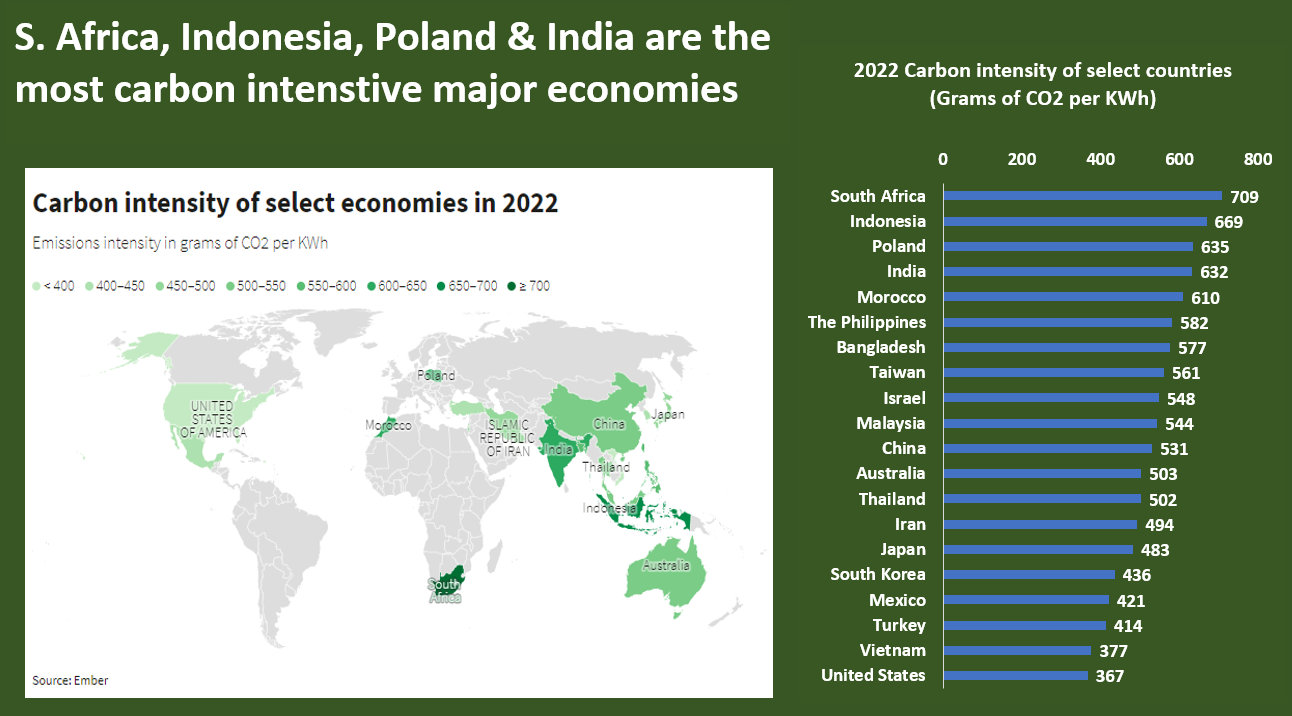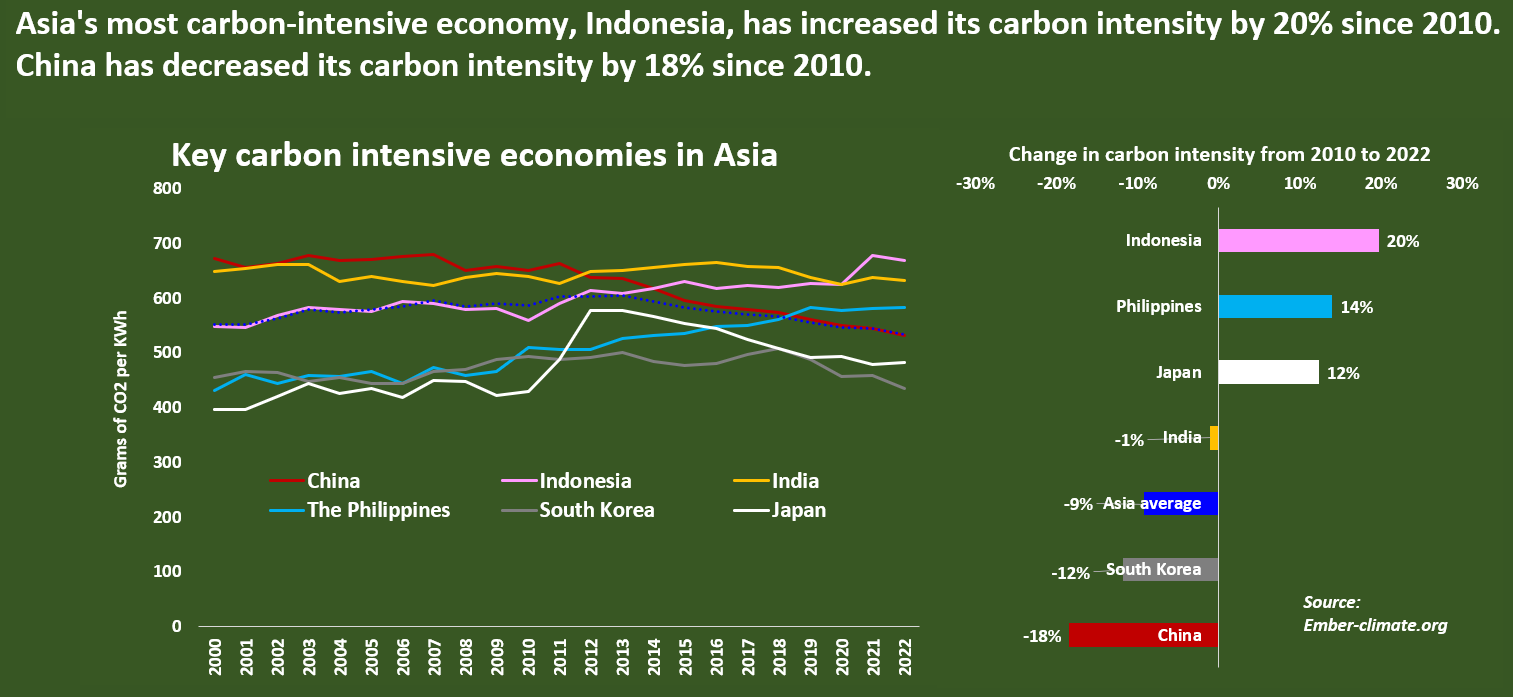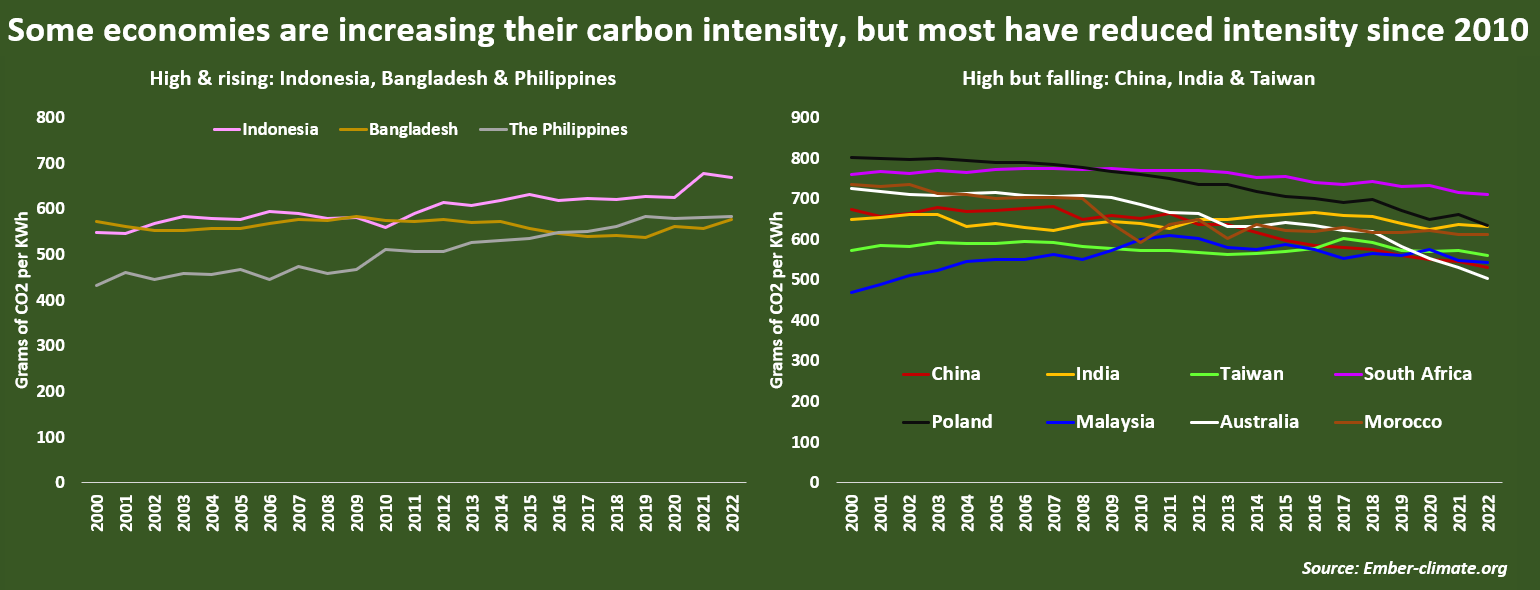South Africa was the world’s most carbon-intensive major economy in 2022, producing 709 grams of carbon dioxide per kilowatt hour of energy generated, according to data from think tank Ember.
Indonesia (660g of CO2) and Poland (635g of CO2) were the second and third ranked large economies, highlighting a wide geographical span when it comes to the highest polluting countries per unit of generated energy.

All three top carbon-intensive nations are heavy coal users in energy generation, which accounts for their outsized discharge relative to other economies of similar size and make up.
However, each nation has also embarked on efforts to reduce pollution totals through aggressive adoption of renewable energy supplies that will gradually displace coal in electricity generation systems.
That suggests that carbon intensity trends – and associated emissions trajectories – in each country should start to decline once coal reliance starts to wane, which will be supportive for global efforts to drive total carbon discharge lower by 2050.
HEAVY HITTERS
Beyond South Africa, Indonesia and Poland, other notable economies that have a high and climbing carbon intensity include Morocco and The Philippines, which have seen intensity levels rise by 3.5% and 14% respectively since 2010.
Taiwan, Hong Kong, Thailand and Saudi Arabia also have relatively high intensity levels, though have managed to steer them lower over the past decade.
Several countries in Africa, including Botswana, Guinea-Bissau, Gambia and South Sudan all scored even higher than South Africa in terms of carbon emissions per unit of generated power. But due to their much smaller economies are less significant in terms of potential climate impact than major fast-growing nations such as Indonesia.
And while South Africa may have topped the overall pile of major economies in 2022, the trajectory of its carbon intensity has been steadily lower for the past decade, with the latest carbon intensity level nearly 8% lower than that of 2010.
Poland’s carbon intensity is also on a steadily declining track, and has dropped 16% since 2010 due to greater use of renewables and cleaner-burning natural gas in energy generation.

India, which had a carbon intensity of 632 grams per KWh in 2022, also has a declining intensity trend, although at a much shallower slope than Poland given India’s continued high reliance on coal in power generation.
India’s intensity level is down only 1% from 2010s level, but has declined 3.5% since 2018.
TRENDING LOWER
Other key economies with significant carbon intensity trends include Japan, which was forced to sharply increase carbon intensity in the wake of the 2011 Fukushima nuclear meltdown by shuttering other nuclear plants and increasing use of coal and gas-fired plants to generate electricity instead.
Japan’s intensity has declined again as more nuclear plants had resumed service, and the country looks set to continue lowering its intensity levels going forward as more renewable power capacity is brought online.

Most other major economies are also undergoing steady carbon intensity declines, including Australia, which in the early 2000’s had one of the highest carbon intensity ratings in the world thanks to its predominantly coal-fired power system, but has now cut that intensity through sharp increases in solar and wind power generation.
The world average intensity rating is also grinding steadily lower, and has dropped 9% since 2010 and 5% over the past five years.
With many of the currently most carbon intensive economies expected to roll out steep jumps in renewable power within the coming years, the decline in global intensity should now start to accelerate, and plumb progressive new lows that help realize other key emissions reduction targets.
The opinions expressed here are those of the author, a columnist for Reuters.
Share This:






